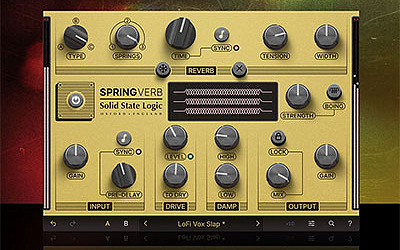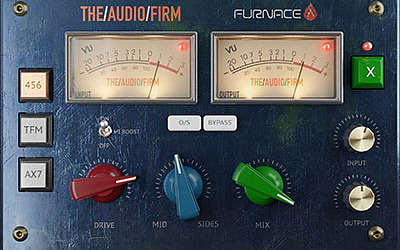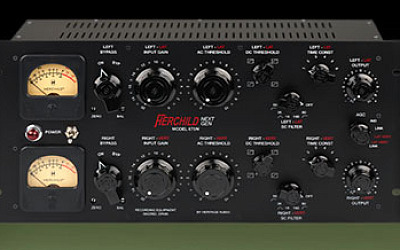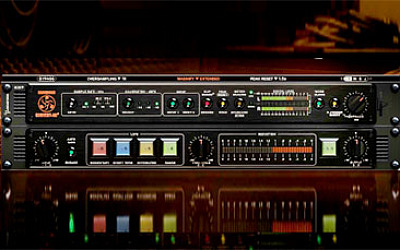Having captured the sounds of the historic microphones used during the 1920s and 1930s for the feature film, The King’s Speech, Waves Audio has worked with Abbey Road Studios to deliver The King’s Microphones plug-in.
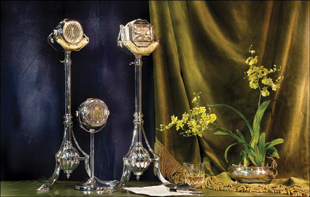 The Waves/Abbey Road plug-in is a digital audio processor, created in concept by Abbey Road Studios and engineered by Waves, and marks the first collaboration between Waves and Abbey Road Studios.
The Waves/Abbey Road plug-in is a digital audio processor, created in concept by Abbey Road Studios and engineered by Waves, and marks the first collaboration between Waves and Abbey Road Studios.
The plug-in recreates these rare microphones, giving studio/live mix engineers a quick and easy distinctive vintage/’lo-fi’ sound for vocals, drums; giving post re-mixers a dialogue processor to ‘achieve authentic period-appropriate sounds; and giving sound designers the chance to recreate the sounds of the era, for the shaping and processing of sound effects’.
The mics were recently restored and employed to record audio for the film, which inspired the team at Abbey Road to explore their potential further. ‘Last year, I had the fantastic opportunity to use the microphones built for the British Royal family while recording the score for The King’s Speech, says Peter Cobbin, senior recording engineer at Abbey Road Studios, who worked closely with the Waves engineering team on the development of the plug-in. ‘This year, I am proud that the combined efforts of Abbey Road Studios and Waves have produced a wonderful plug-in that captures the essence of these beautiful and rare microphones.’
The King’s Microphones plug-in is an EQ filter processor that recreates the tonal character of the microphones, with three proximity positions for each – Close, which emulates the response from a source located 5cm from the capsule, creating a warmer tone through proximity; Ambient, which emulates the response from a source located 40cm from the capsule; and Natural, which emulates the basic response of the microphone, without any proximity effect or artefacts. The King’s Microphones plug-in is RTAS, AudioSuite, VST, AU and Waves SoundGrid compatible. Additionally, the King’s Microphones plugin works in Mono or Stereo mode.
Today, Abbey Road Studios is one of the most technically advanced recording, mixing and postproduction facilities in the world. In the 1920s and 1930s, EMI crafted special microphones for the British Royal Family for use at important and significant occasions. From this extremely rare collection, three microphones were chosen as the basis for this plug-in.
Used exclusively by the royal family, each mic was tailored and tuned to its specific user – King George V, King George VI or Queen Elizabeth. Ornately designed and decorated with gold, silver and chrome adornments bearing the royal coats of arms, each is a one-of-a-kind aesthetic masterpiece with its own distinctive sonic character.
HM King George V model: This Carbon microphone was designed by Marconi-Reisz circa 1925. It consists of fine carbon dust held between output electrodes, fronted by a mica diaphragm and encased in a grand marble shell. Carbon microphones are rarely used today. Despite the model’s limited bandwidth and relatively high noise floor, it was one of the best microphones available at the time, and this particular microphone and plug-in have a colored sound unlike any mics manufactured today.
HM King George VI and H.M. Queen Elizabeth models: Both of these microphones were based on the EMI CPM201. These moving-coil microphones were specially built in 1936, encased in silver by G&S Co Ltd of London. The diaphragm is made of PVC and shaped almost like a loudspeaker cone. It is presumed these microphones were designed for outside broadcast, as they are more robust than the ribbon microphones of the time.
After being discovered in the vaults of the EMI Archive Trust by Cobbin, the microphones were then used by him to record music and dialogue for The King’s Speech at Abbey Road Studios. After the film was finished, he was tempted to try the microphones on other sources. Drums, guitars, vocals and synths were then played and ‘processed’ through the microphones at different proximities. Cobbin’s curiosity was rewarded with some fantastic and unique ‘filter’-type effects, inspiring the eventual collaboration with Waves. The resulting plug-in allows sound designers, engineers, producers and musicians all over the world to give their audio the ‘royal’ treatment.
‘It was exciting to know we had the very microphone used by King George VI, the central character of this film, and I thought how appropriate and inspiring it would be to have the microphones present at our recording sessions,’ Cobbin says. ‘The royal microphones are works of highly-skilled craftsmanship.’
Mirek Stiles, Head of Audio Products at Abbey Road, adds: ‘Since the early 1990s, Waves has been developing groundbreaking plug-ins for the audio industry. We are very proud to be working closely with Waves in the creation of exciting new products based on the legendary Abbey Road Studios equipment and expertise.’
More: www.waves.com
